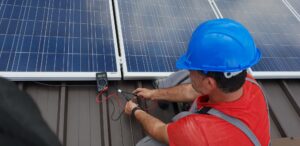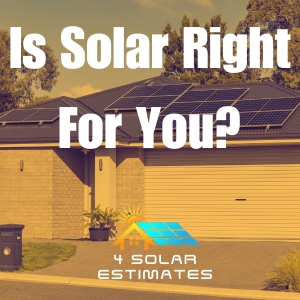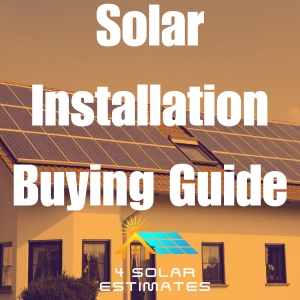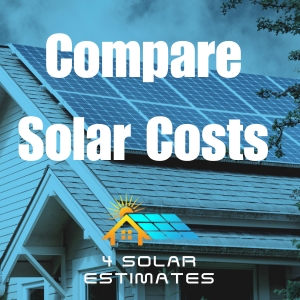
How to Determine if Solar Panels Are Right for You
In an era where renewable energy sources are not merely options but necessities, many homeowners find themselves standing at the crossroads, contemplating whether solar panels are the right fit for their household. Making the transition to solar power involves multiple considerations, from evaluating your home’s solar potential to understanding the financial implications. This blog seeks to delve into how you can determine if solar panels are the ideal choice for your energy needs.
COMPARE SOLAR QUOTES1. Understanding Your Energy Consumption
The first step in considering solar panels involves a thorough analysis of your household’s energy consumption. Evaluate your electricity bills over the past year, paying attention to peak usage periods and overall annual consumption. The objective is to understand:
- Peak Energy Demands: Identify months where your energy demand spikes, such as summer months where air conditioning may be in high use.
- Annual Consumption: Gain an understanding of your total annual electricity usage to ascertain the scale of the solar system needed.
Average Home Energy Usage
In the U.S., the average home consumes approximately 877 kWh per month, according to the U.S. Energy Information Administration (EIA). However, this figure can significantly fluctuate depending on the state, size of the dwelling, number of occupants, and the intensity of usage of various electrical appliances and systems.
For instance, a home with multiple high-consumption electrical appliances such as air conditioners, heating systems, and a plethora of smart devices may find its consumption figures soaring above the national average. Conversely, a smaller home, with energy-efficient appliances, LED lighting, and a mindful usage approach may clock in below this figure.
Translating Consumption to Solar Panel Needs
The number of solar panels required to power your home is contingent upon multiple variables:
- Energy Consumption: The total kWh utilized by your household on an annual basis sets the base for determining how much energy your solar panels need to generate.
- Sunlight Exposure: The total hours of sunlight your location receives impacts the energy generation capacity of solar panels. Typically, in the U.S., this ranges between 4-5 hours per day, though it can be higher in notably sunny locales.
- Panel Efficiency: Different solar panels come with varying energy output ratings, commonly ranging between 250 – 400 watts per panel.

A Basic Calculation
Utilizing these figures, a rudimentary calculation to gauge the number of panels can be formulated:
Number of Panels=(Annual Consumption×1.2)÷(Panel Wattage×Average Sunlight Hours×365)
The factor 1.2 accounts for energy loss due to inefficiencies in the system, like shading and inverter losses.
For example, let’s consider an annual consumption of 10,000 kWh, panel wattage of 300 watts, and an average of 5 sunlight hours per day:
Number of Panels=(10,000×1.2)÷(300×5×365)≈20
Thus, approximately 20 panels would be required for this hypothetical situation.
Understanding your energy consumption and translating it into tangible solar panel requirements is paramount in your journey towards solar transition. It allows you to approximate the size and scalability of your solar system, ensuring it is tailored to meet your household’s energy needs effectively.
COMPARE SOLAR QUOTES2. Assessing the Solar Potential of Your Location
The efficacy of solar panels is significantly influenced by the geographical and physical attributes of your location.
- Sunlight Exposure: The amount and intensity of sunlight your location receives play a crucial role in determining the productivity of solar panels.
- Roof Attributes: Consider the size, shape, and orientation of your roof. South-facing roofs tend to harvest more sunlight in the Northern Hemisphere.
Utilize online tools like Google’s Project Sunroof to gauge the solar potential of your location and obtain an initial estimate of the feasibility and benefits of installing solar panels.
As you traverse the path towards incorporating solar panels into your home, understanding how your geographical and physical location impacts solar panel efficiency becomes paramount. Your home’s potential for harnessing solar power is significantly influenced by factors such as sunlight availability, roof characteristics, and regional climate conditions.

Sunlight Availability: A Pivotal Factor
Solar panels require sunlight to produce electricity, making the availability and intensity of sunlight in your area a key determinant of your potential solar yield.
- Geographical Location: Homes located closer to the equator generally receive more direct sunlight, thereby enhancing solar panel efficiency. For instance, a home in Florida might extract more energy from solar panels than one in Alaska due to the sheer discrepancy in sunlight exposure.
- Seasonal Variations: Additionally, fluctuations in sunlight hours between summer and winter, especially in regions with pronounced seasonal changes, may affect the consistency of solar energy generation.
3. Financial Implications and Incentives
Understanding and navigating through the financial aspects of solar panel installation can be daunting but is pivotal. Here’s what you need to explore:
- Initial Installation Costs: Obtain quotes from various service providers to understand the upfront costs involved.
- Return on Investment (ROI): Calculate the ROI by evaluating how much you could save on electricity bills and compare this against the installation costs.
- Government Incentives: Investigate local, state, and federal incentives, rebates, and tax credits available for solar panel installation. The Database of State Incentives for Renewables & Efficiency (DSIRE) is a valuable resource for exploring available incentives.
A Glimpse into the Average Costs of Solar Panels
Solar panel costs can fluctuate widely, influenced by factors like the brand, quality, installation complexity, and the overall size of the system. As of 2023, the average cost of solar panel installation in the United States ranges from $15,000 to $25,000, with the average cost per watt hovering between $2.50 and $4.00. However, these prices can vary substantially based on your geographic location and the specific requirements of your home.

Exploring Financial Incentives
A myriad of financial incentives exist to alleviate the initial investment burden and enhance the appeal of transitioning to solar:
- Federal Solar Investment Tax Credit (ITC): A prominent incentive in the USA, the ITC allows you to deduct a percentage of your solar costs from your federal taxes. It’s noteworthy that the ITC rate is scheduled to decline over the coming years.
- State and Local Incentives: Depending on your location, various state and local incentives might be available. These can encompass direct rebates, performance-based incentives, and more, all designed to offset your solar panel installation costs.
- Solar Renewable Energy Credits (SRECs): In some states, solar panel owners can earn SRECs for the energy their system generates and can sell these credits to utility companies, presenting an additional income stream.
Unlocking Tax Breaks
In addition to direct financial incentives, a number of tax breaks further sweeten the economic aspect of solar panel installation:
- Property Tax Exemptions: Some regions offer property tax exemptions for homeowners who install solar panel systems, ensuring that your property taxes do not spike despite the increased home value resulting from your solar investment.
- Sales Tax Exemptions: Certain states provide exemptions from sales tax on solar panel systems, reducing the upfront costs of transitioning to solar.
- Tax Credits: Various state-level tax credits are available that, akin to the federal ITC, reduce your state tax liability and thereby subsidize the cost of the system.
Navigating through the financial landscape of solar panel installation involves intertwining initial costs, incentives, and tax breaks to forge a path that’s both economically and environmentally sustainable. It’s imperative to explore and amalgamate these avenues, ensuring that your solar venture is not just a beacon for clean energy but also a strategically sound financial investment. By intertwining the ecological with the economic, you illuminate a pathway that marries sustainability with affordability, embedding the sun’s power deeply into your home and life.

4. Types of Solar Panel Systems
Understanding the different types of solar panel systems and their respective pros and cons is imperative in determining the right fit for your household.
- On-Grid Systems: These are connected to the public electricity grid and allow you to feed excess electricity back into the grid, often providing financial compensation.
- Off-Grid Systems: These systems are not connected to the electricity grid and often come with additional battery costs for storing electricity.
- Hybrid Systems: Combine the features of on-grid and off-grid systems, providing the reliability and flexibility of both.
Embracing the sun as a viable energy source involves a discerning choice among various solar panel types, each with its own set of attributes, efficiencies, and suitable applications. From photovoltaic to thermal solar solutions, understanding the differential landscape enables you to pinpoint the solar solution that aligns with your home, roof, and energy aspirations.
COMPARE SOLAR QUOTESMonocrystalline Solar Panels (Mono-SI)
- Key Features: Comprised of single-crystal silicon, presenting a uniform dark look, and characterized by rounded edges.
- Efficiency: High efficiency, typically around 15-20%.
- Cost: Tend to be more expensive due to higher efficiency and aesthetic appeal.
- Best Suited For: Homes with limited roof space or high energy consumption since these panels are highly efficient.
Polycrystalline Solar Panels (p-Si)
- Key Features: Distinctive with their blueish hue and square shape, composed of multiple silicon fragments melted together.
- Efficiency: Slightly less efficient than monocrystalline panels, usually ranging from 15-17%.
- Cost: Generally more budget-friendly than their monocrystalline counterparts.
- Best Suited For: Homes with ample roof space where high efficiency is not critically paramount.

Thin-Film: Amorphous Silicon Solar Panels (A-Si)
- Key Features: Known for their thin, homogenous appearance, and flexibility.
- Efficiency: Tend to have lower efficiency, often in the 10-12% range.
- Cost: Usually more cost-effective but require more space.
- Best Suited For: Larger rooftops or buildings with a vast, flat area like warehouses.
Concentrated PV Cell (CVP and HCVP)
- Key Features: Curved mirror surfaces or lenses that concentrate sunlight onto super-efficient cells.
- Efficiency: Extremely high efficiency, some up to 41%, and often deployed with a cooling system.
- Cost: Higher initial investment but notable for their superior efficiency.
- Best Suited For: Areas with high solar insolation, ideally in commercial setups with specialized solar tracking and cooling systems.
Solar Thermal Panels
- Key Features: Not to be confused with photovoltaic panels, solar thermal panels are designed for heating purposes, such as water heating.
- Efficiency: Very efficient for heating applications, sometimes up to 70%.
- Cost: Tend to be less expensive than PV systems but are used for different purposes.
- Best Suited For: Homes in regions where heating demands are significant and consistent.

5. Legalities and Permissions
Before jumping on the solar bandwagon, ensure you’re aware and compliant with any legal requirements or restrictions.
COMPARE SOLAR QUOTESBuilding Codes for Solar Panels
It’s a common scenario where local building codes stipulate specific guidelines regarding solar panel installations. These directives primarily safeguard structural integrity, ensuring installations do not compromise building safety and are in harmony with the aesthetic and environmental norms of the locality. Consequently, adherence to building codes not only steers you clear of legal hiccups but also ensures the safety and efficacy of your solar energy system.
Permitting
In the realm of permitting, the journey might be multilayered, encompassing various aspects from electrical configurations to structural evaluations. Securing a permit often requires detailed documentation, perhaps schematics of your proposed system, an electrical wiring diagram, or a site plan illustrating panel positioning.
Furthermore, in some locations, the process could extend to encompass a range of approvals, potentially from the local municipality, an electric utility, or even a homeowner’s association. It’s not unusual for authorities to request an inspection post-installation, ensuring the implemented system aligns seamlessly with the proposed and permitted design and adheres to all relevant codes and standards.

6. Choosing a Reliable Solar Panel Provider
Partnering with a reputable and reliable solar panel provider ensures quality and efficiency in both the product and installation.
- Experience: Consider providers with a strong track record and expertise in solar installation.
- Warranty: Evaluate the warranties offered on both the panels and the installation.
- Reviews and Testimonials: Explore reviews and testimonials from previous customers to assess the provider’s credibility and customer service.
Determining if solar panels are the right choice for your household can be a multifaceted decision, involving considerations related to your energy consumption, financial position, and the physical and geographical attributes of your home. Armed with a comprehensive understanding of these aspects, you are well-placed to make an informed decision, stepping into a future where your energy needs are met in harmony with the environment. Remember, the transition to solar is not merely an individual choice but a step towards a sustainable future for all. May your decision be bathed in the abundant, nurturing sunlight!
COMPARE SOLAR QUOTES
Leave a Reply